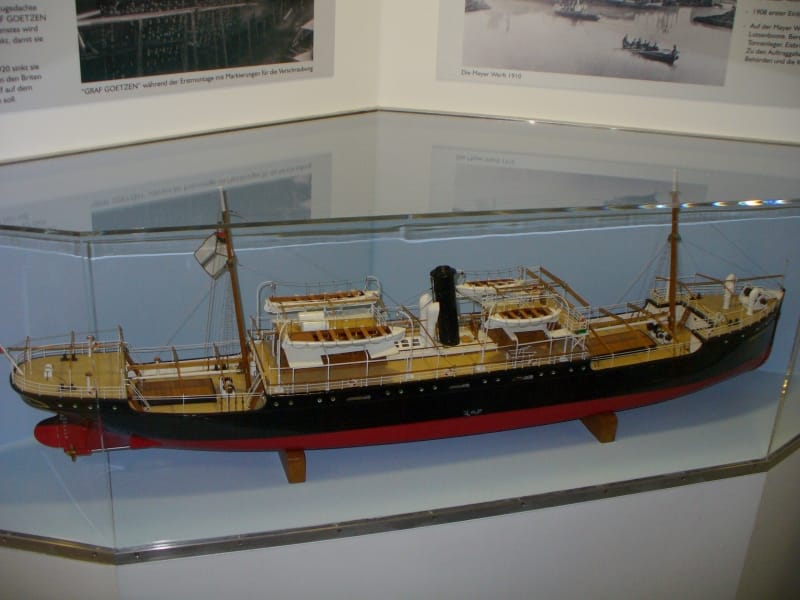From Wikipedia:
"The MV Liemba, formerly the Graf von Götzen, is a passenger cargo ferry that runs along the eastern shore of Lake Tanganyika. The ship was built in 1913 in Germany, and was one of three vessels operated by the Germans to control Lake Tanganyika during the early part of World War I. It was scuttled by its captain on 26 July 1916 off the mouth of the Malagarasi river, during the German retreat from the town of Kigoma. In 1924 the ship was salvaged by a British Royal Navy salvage team and recommissioned in 1927 as the Liemba. The vessel is now owned by the Tanzania Railways Corporation and runs between the ports of Bujumbura, Burundi, Kigoma, Tanzania and Mpulungu, Zambia with numerous stops to pick up and set down passengers in between."
Some weeks ago I talked about a commission to build a tramp steamer for a gaming scenario in East Africa. As I had just finished reading the fantastic book "A Matter of Time" by Alex Capus, I researched the "Graf Goetzen" a bit further and suggested to build her for my customer. He happily agreed, and we decided to build the ship with separate guns to use it either as militarised or civic version.
Here's a historic photo of the ship and the 10,5 cm SK gun salvaged from the sunken "Königsberg" and mounted on the Goetzen:


And this is how the ship looks like today, one of the oldest working ships around:

When building a wargames model from an existing ship, the most important decision is to select what to realize, what to simplify and what to leave out at all. The customer wanted a ship fitting his gaming table, no longer than around 45 cm, so I decided to only build the front cabin and leave the second one out. I looked for pics of existing models of the Graf Goetzen and found quite a couple of those, for example the original shipyard's model and a another one showing it nicely from the side:


From the side view I could measure the proportions of the different sections, scale them down and transfered them to 3 mm polystyrene sheet. This was the ships bottom foundation:

When building a ship from plasticard, you usually would cut a lot of bulk sections and add decks and walls to them. To save time but still get a sturdy and level construction, I used two layers of 1 cm and a top layer of 3 cm foamboard (Styrodur), glued with a special foamboard glue.

Another benefit when working with foamboard is that you could shape nice curves and don't need to go for the traditional vertical stern sections so typical for wargames ship models. The Goetzen had an elevated stern section which reproduced quite nicely in foamboard. Top decks were added from 2 mm sheet and the first sidewall from 1 mm plasticard was glued to the sides with both foamboard glue and polystyrol cement, then clamped.


Walls were added, the cargo holds cut out and clad in plasticsheet and some metal shipdoors added. The portholes were carefully measured on the sheet and drilled out before the walls were glued on; after painting the holes will be filled with rivets simulating ship portholes. After a while, the ship was completely clad in plastic sheet and looked like this:

In the background you can see the cargo hold covers and start of the cabin. More next time soon!